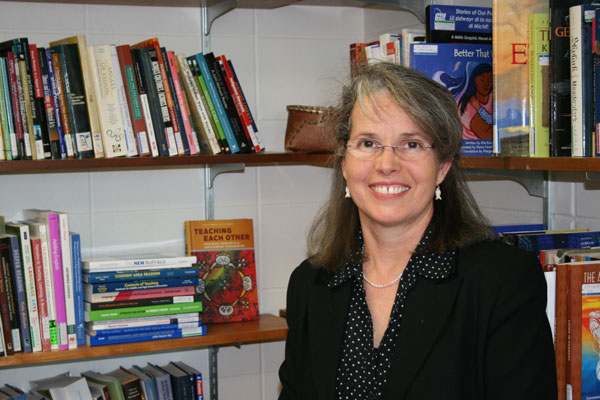Language a critical part of culture
- EFN Staff | April 20, 2015
“The one thing that everyone has in common is this ground we call ‘home,’” says Gail MacKay. “To have an appreciation of the naming of the place where we are and an understanding of the land through Indigenous language contributes to good relationships between people.”
An assistant professor in the Department of Curriculum Studies in the College of Education, MacKay explains language is a critical part not only of culture but of how people see and interact with the world. Such “Indigenous rhetorics” are MacKay’s specialty, the study of which she would like to bring to Saskatchewan’s K-12 classrooms.
“A rhetoric is a system of meaning-making that is understood by a group of people and is expressive of a world view and life philosophy,” she said, explaining the printed word is only one part of such systems, which include visual elements, symbols and patterns all working together to communicate sophisticated ideas.
A Métis of Anishinabe-European ancestry, MacKay grew up in a small community in the woodlands of northwestern Ontario near Sault Ste. Marie. While her studies have taken her back and forth from Western to Central Canada and the northern U.S., she has called the Prairies home since the 1990s.
MacKay completed a BA in English literature at the University of Calgary and obtained a Bachelor of Education at the University of Toronto before coming to the University of Saskatchewan for her M.Ed. She is currently completing an interdisciplinary PhD in Curriculum Studies and Native Studies.
MacKay speaks of “patterns of meaning-making” borne of a person’s mother tongue and persisting even as a person communicates in another language. For example, an Indigenous person may use English to express an idea, but choose words, symbols, constructions and logic guided by their Indigenous rhetoric. She says the result can sound like errors in academic English. Conversely, Canadian standard English speakers, grounded in their own native rhetoric, may be unaware how they are coming across to an Indigenous person or audience.
“Patterns in spoken and written languages are culturally specific,” she says. “Bringing this knowledge into the educational system contributes to mutual understanding and can elevate Indigenous rhetoric so people recognize it as something sophisticated and not an error in writing.”
As a faculty member charged with teaching Saskatchewan’s teachers-in-training, MacKay says she also hopes to imbue her students with a sense of community connection and service.
“If they trust themselves to build relationships in the communities where they teach, I think that will allow them to continue their own learning,” she says. “We should always work from the position of humility and gratitude.”
Click here for more Education & Training stories and here for more on Arts & Culture.

